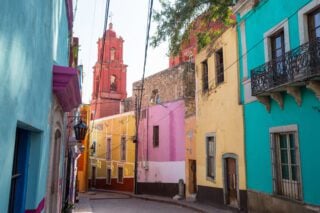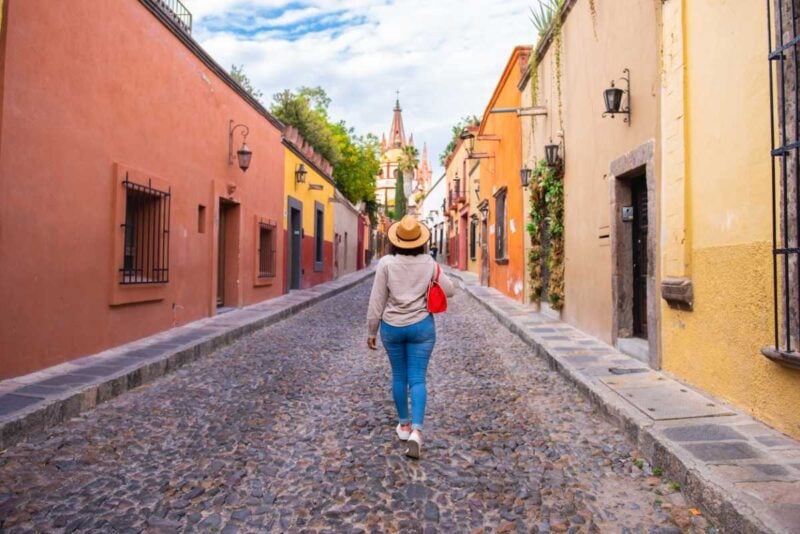
Embracing a New Life South of the Border
 Mexico is home to the world’s largest community of U.S. expats, drawn by the country’s tropical climate, vibrant culture, and lower cost of living. Moving to Mexico from the U.S. comes with several benefits. For one, many aspects of the cost of living – such as housing, utilities, groceries, and transportation – are significantly cheaper in Mexico than in the States. Moreover, expats can access the country’s high-quality healthcare system, which has a reputation for excellent patient outcomes.
Mexico is home to the world’s largest community of U.S. expats, drawn by the country’s tropical climate, vibrant culture, and lower cost of living. Moving to Mexico from the U.S. comes with several benefits. For one, many aspects of the cost of living – such as housing, utilities, groceries, and transportation – are significantly cheaper in Mexico than in the States. Moreover, expats can access the country’s high-quality healthcare system, which has a reputation for excellent patient outcomes.
If you’re hoping to join the 1.6 million Americans who have already relocated, this article can help you make that dream a reality. From visa requirements and health insurance options to tips on finding a job and place to live, here's everything you need to know.
Mexico is home to the world’s largest community of U.S. expats, drawn by the country’s tropical climate, vibrant culture, and lower cost of living. Moving to Mexico from the U.S. comes with several benefits. For one, many aspects of the cost of living – such as housing, utilities, groceries, and transportation – are significantly cheaper in Mexico than in the States. Moreover, expats can access the country’s high-quality healthcare system, which has a reputation for excellent patient outcomes.
If you’re hoping to join the 1.6 million Americans who have already relocated, this article can help you make that dream a reality. From visa requirements and health insurance options to tips on finding a job and place to live, here's everything you need to know.
Legal Requirements for Americans Moving to Mexico
American citizens can stay in Mexico for up to 90 days without a visa or 180 days with a tourist visa. Because of the country’s proximity to the United States, many expats “flagpole” – briefly return to the U.S. before their stay expires, then re-enter to reset their 90-day period.
While this strategy works for some people, it’s technically legal and best avoided as a long-term immigration solution. If you intend to work, study, or retire in Mexico, you must apply for a visa. Depending on the visa type, you may need to apply in person at a Mexican embassy or consulate.
Mexican Visas and Health Insurance Requirements
Some of Mexico’s visas require proof of international health insurance for the duration of your stay, which you must provide when applying for your visa. It’s essential to research the specific requirements for your chosen visa. You can find more details about Mexico's healthcare system and coverage options later in this article.

Find the Best International Insurance
- Compare multiple quotes and coverage options
- Work with an insurance expert at no additional cost
- Find the best plan for your needs and budget
Mexican Visas and Proof of Economic Solvency
Most temporary or permanent visas for Mexico require applicants to show they have enough financial resources to pay for their stay.
There are two ways to meet this requirement: by showing proof of a minimum monthly income or a minimum savings account balance over an extended period. In both cases, your income must be documented with six to 12 months of bank statements.
Depending on the visa, you may need to prove that you have at least 5,000 times the Mexican minimum wage in savings or that you earn a monthly income equivalent to at least 300 days of the Mexican minimum wage. For context, the Mexican minimum wage will be 279 pesos (US$13.75) starting in January 2025.
Be aware that the minimum income requirement may be slightly higher or lower depending on where you are moving from and the Mexican city or state you are moving to. It's best to contact the Mexican consulate where you plan to apply to confirm how much will be required.
Mexico’s Visa Options and Requirements
Mexico offers several types of visas, each with unique requirements and paperwork, so it's important to choose the one that best fits your situation.
For most foreigners, the first step is applying for a temporary residency visa, which allows you to live in Mexico for more than 180 days and up to four years.
To apply, you must submit various documents, including an application form, a copy of your passport, proof of legal status in the U.S., and a $53 fee. Depending on the specific type of temporary resident visa you're applying for, you may need to submit additional documents.
While there isn't a dedicated digital nomad visa for Mexico, expats who want to live in Mexico long-term while working remotely can apply for a temporary resident visa. This visa provides a straightforward option for digital nomads and other remote workers to establish residency in the country.
Below is an overview of Mexico's visa options to help you determine which one best suits your needs.
Work Visas
If you want to live and work in Mexico, you must obtain a temporary resident visa and a work permit. Both of these require you to provide proof of employment and salary. Once you have the work visa and permit, you’ll be able to remain in the country for up to four years.
Retirement Visas
Technically, Mexico doesn’t have a dedicated retirement visa. Instead, retirees can apply for a permanent resident visa, which involves submitting the same documents required for a temporary resident visa.

To qualify for this visa, you must prove you are fully retired and can sustain yourself financially while living in Mexico. Notably, if you are granted the visa, you cannot work or engage in any income-generating activities within Mexico during your stay.
Study Visas
Mexico’s student visa is a type of temporary resident visa for individuals planning to study at a Mexican school or university.
To apply, international students must submit an application form along with an original copy of their acceptance letter from the Mexican educational institution where they plan to study.
Can an American Become a Resident of Mexico?
Yes, Americans can live in Mexico. To do so, you’ll need to apply for a temporary resident visa, which allows you to stay in the country for up to four years.
Upon arrival in Mexico, you must visit the National Immigration Institute (INM) within 30 days to obtain your residence card.
Similarly, if you qualify for permanent residency and are granted a visa, you will need to visit the INM to get your permanent residence card.
Can an American Become a Mexican Citizen?
There are several pathways for foreigners to become naturalized Mexican citizens. Americans should note that dual citizenship is permitted under both U.S. and Mexican law, though you must use your American passport to enter and exit the United States.
Typically, you must reside in Mexico on a temporary or permanent resident visa for five years to qualify for naturalization. However, if you marry a Mexican citizen, this requirement is reduced to two years.
Additionally, applicants must pass a naturalization exam that tests their knowledge of Mexican history and culture and proficiency in Spanish.
Is Mexico Safe for U.S. Citizens?
The 2024 Global Peace Index ranked Mexico 138th out of 163 countries, reflecting the nation's safety challenges compared to others. However, this doesn't mean that expats can't live a safe and peaceful life in the country.
To provide some context, Mexico ranks just six places behind the U.S., which holds a score of 132. While some regions of Mexico have higher crime rates, most American expat communities are located in safer areas.
The lower safety ranking is largely attributed to issues such as drug cartel activity and drug-related crimes. But with careful planning and research, it's possible to avoid high-crime areas and settle in one of Mexico’s more peaceful towns or cities.
Wherever you choose to live, it's essential to stay mindful of basic safety measures. For instance, it's important to be aware of your surroundings at all times, especially when driving on highways, as carjackings, kidnappings, and robberies can be more common in certain regions.
Read More: The Safest Places to Live in Mexico
Where to Move to in Mexico
American citizens live all across Mexico, but certain cities and towns have vibrant immigrant communities, making them ideal places to settle.
Some of the best places to live in Mexico include Mexico City, Merida, and Guadalajara. Below is an overview of each city and what it offers to foreigners.
Mexico City
With a population of nearly 10 million, Mexico City is not only the country’s largest urban center but also its capital. It offers excellent amenities and is known for being affordable, walkable, and rich in culture. The city’s diverse neighborhoods provide something for everyone, from trendy districts like Roma and Condesa to more historic areas like Coyoacán and Xochimilco.
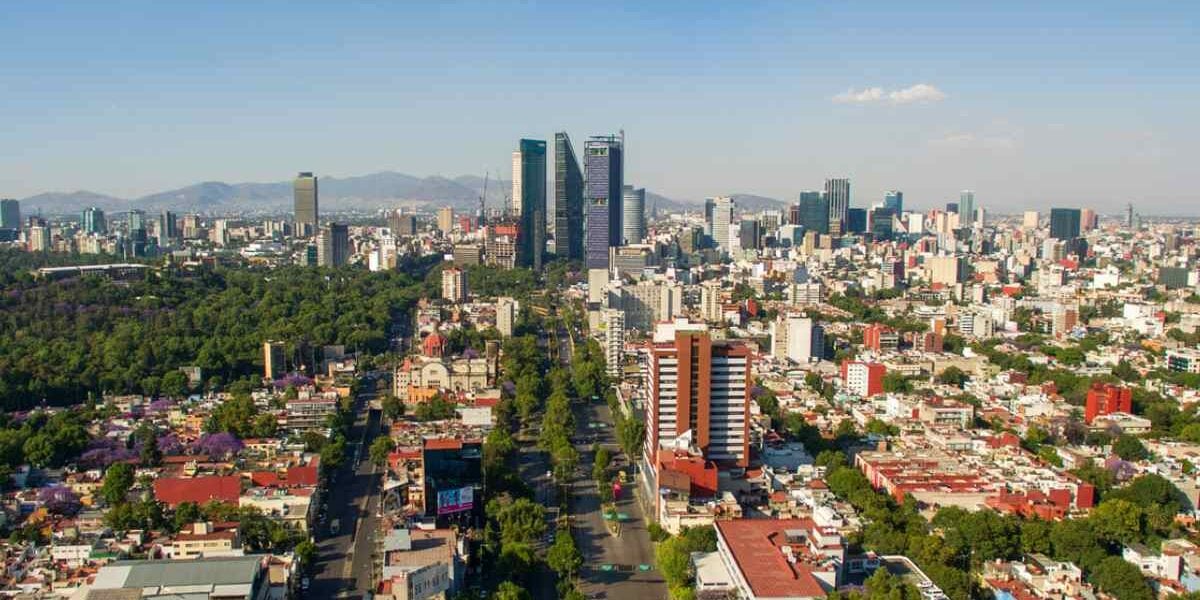
From charming streetside cafes and ancient landmarks to a thriving cultural scene and European-inspired architecture, there's always something exciting to see and do here. Whether you're exploring world-class museums, dining at high-end restaurants, or experiencing local markets and vibrant street life, Mexico City truly offers a dynamic urban experience that blends the old with the new.
Merida
Mérida isn’t just one of the best Mexican cities to live in – it’s also one of the safest. Known as the "White City," Mérida boasts a well-preserved colonial center, vibrant architecture, and a rich cultural heritage influenced by both Spanish and Mayan traditions. Its proximity to beautiful beaches and historic Mayan sites offers a stunning, diverse landscape to explore.
Mérida’s low cost of living (about 20% less than in Mexico City) makes it a top pick for immigrants from around the world. The city also offers excellent healthcare facilities, reliable infrastructure, and a slower pace of life that appeals to retirees, families, and remote workers alike. Additionally, Mérida's thriving arts scene, lively festivals, and renowned Yucatán cuisine ensure there’s always something to enjoy.
Guadalajara
Guadalajara is the second-largest city in Mexico and offers a dynamic blend of modern innovation and traditional culture. Its thriving IT industry has earned it the nickname "Mexico’s Silicon Valley," making it an excellent choice for digital nomads and tech professionals. Families and remote workers alike will appreciate its abundant green spaces, pleasant year-round weather, and excellent educational institutions.
Guadalajara is renowned for its rich cultural heritage and is the birthplace of mariachi music and tequila. You’ll find world-class museums alongside bustling markets, historic architecture, and a vibrant arts scene. The city also boasts a diverse culinary landscape, making it a food lover's paradise. With a lower cost of living than many major U.S. cities and a strong sense of community, it provides a balanced, high-quality lifestyle for foreigners.
The Cost of Living in Mexico
The cost of living in Mexico is significantly lower than in the United States, making it an attractive option for American expats.
According to July 2024 data from Numbeo and LivingCost, living in urban Mexico costs about 60% less than in major U.S. cities. On average, a single person spends approximately $889 per month on rent, food, and essentials in Mexico, compared to $2,454 in the U.S.
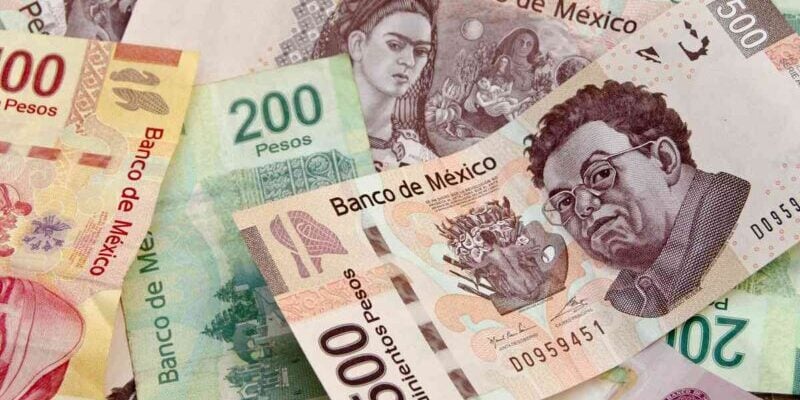
Mexico’s affordability allows many U.S. expats to upgrade their lifestyles by hiring gardeners, housekeepers, and pool cleaners – luxuries that are far more expensive in the States. Dining out is also so budget-friendly that it often becomes a regular habit rather than an occasional treat.
However, whether you move to Mexico or any other country, it’s wise to set a budget and track your spending.
Read More: The Cost of Living in Mexico
How to Find a Place to Live in Mexico
Mexico is a diverse country, and its housing market reflects that diversity. Thanks to the lower cost of living, expats can choose anything from a small apartment for a simple, low-cost lifestyle to a charming beachfront home or a spacious villa with a pool.
Foreigners are allowed to buy land in Mexico, which means expats can also purchase a plot of empty land and design and build a custom home.
Renting a one-bedroom apartment in central Mexico City, the country’s most expensive area, typically costs between $925 and $1,135 per month. However, similar flats can be found in areas like the outskirts of Guadalajara for as little as $435 to $535 per month.
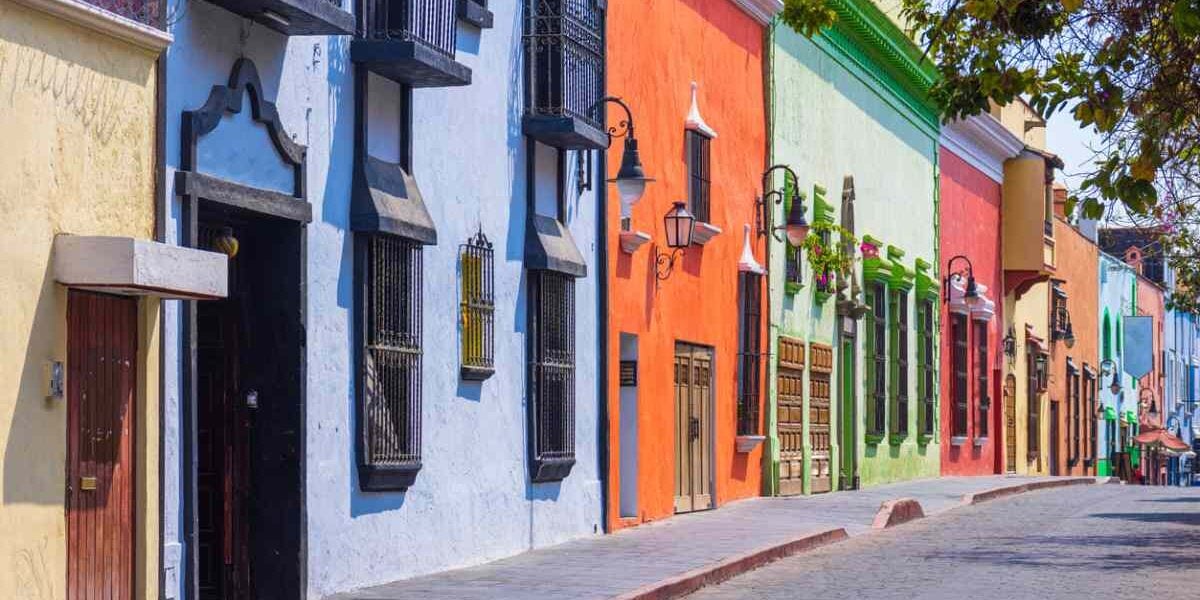
If you plan to rent, note that six-month leases are standard, and most landlords prefer cash payments. It’s wise to hire a lawyer to review your lease terms, as the Spanish-language version takes precedence in any disputes.
Expats renting in Mexico usually need a "fiador" (guarantor) to co-sign their lease. This person must live in Mexico and own property. In some cases, your employer can serve as your co-signer. However, some landlords may waive this requirement if you pay a higher deposit.
If you’re looking to purchase real estate, hiring an experienced, licensed realtor can help ensure a smooth process.
How to Find a Job in Mexico
If you want to work in Mexico, it’s best to secure a job before you move, as many regions struggle with high unemployment. Breaking into the job market can be challenging if you don’t have employment lined up.
For Americans and other English-speaking expats, jobs in the tourism industry are often available. Many expats find casual work in bars, clubs, and restaurants that cater to foreign visitors. However, learning Spanish will significantly improve your career opportunities. If a Mexican employer hires you, note that the standard workweek is 48 hours, typically Monday through Saturday.
To begin your job search, check out OCCMundial and Computrabajo, Mexico’s largest and most reputable online job boards.
Setting Up Banking and Finances in Mexico
The standard currency in Mexico is the Mexican Peso (MXN). As of December 2024, one Mexican Peso equals US$0.05.
Setting up a bank account as a foreigner in Mexico is relatively straightforward, though it does require some organization. If you're not proficient in Spanish, bringing a bilingual friend can help ensure you understand the banking terminology and the process.
Most traditional Mexican banks require you to visit a branch in person to open an account. You'll need to provide photo identification (such as a passport), proof of residency (like a recent utility bill), and proof of legal entry into Mexico (such as a residency card or visa). Some banks or account types may also require a minimum deposit, typically ranging from $100 to $1,000.
BBVA México is the largest bank in the country, with more branches and ATMs than any other bank. Banorte and Santander Mexico are also popular, with extensive branch and ATM networks nationwide. These banks are ideal if you need full-service banking or travel frequently, as they have international networks.
For simpler banking needs, online-only banks can be more convenient and affordable, as they often charge low or no fees. Hey, Banco and SuperDigital are digital banks that issue combined credit-debit cards, making it easy to access your money.
Does Mexico Have a Good Education System?
Families with children who plan to start a new life in Mexico should be aware that the Mexican public education system faces many socio-economic challenges, including underfunding and overcrowded classrooms in some areas.
As a result, many Americans and other expats prefer to enroll their children in private international schools, which often offer curricula based on U.S. or international standards and instruction in English.
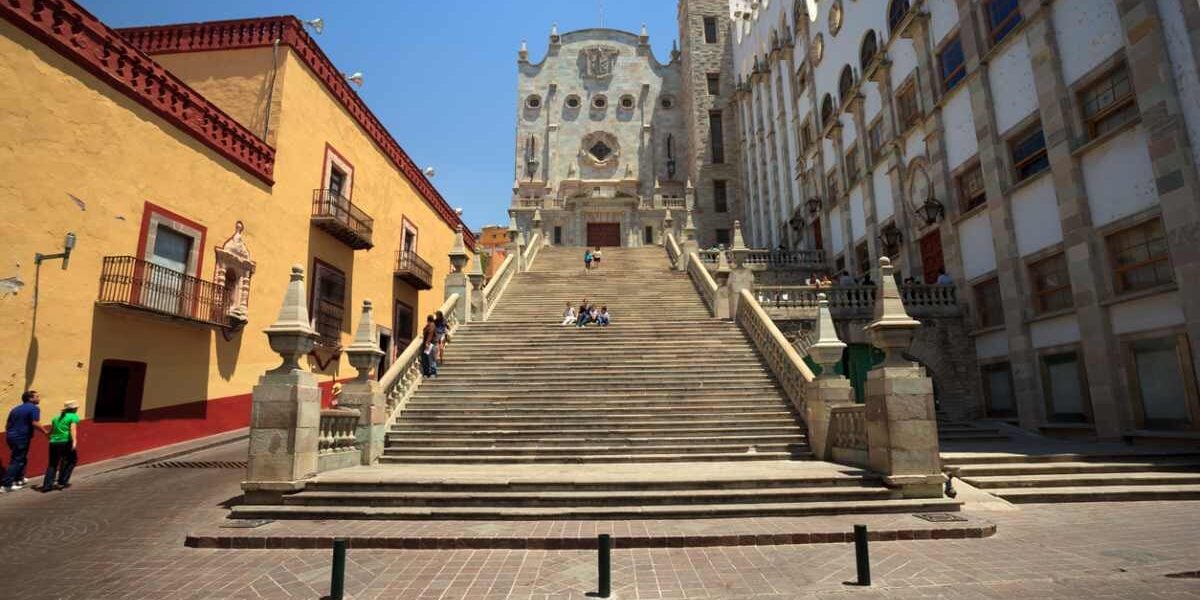
Mexico offers a variety of well-respected universities for college-age adults. Institutions like Universidad Nacional Autónoma de México (UNAM) in Mexico City and Tecnológico de Monterrey (ITESM) in Monterrey are ranked among the best in Latin America and offer high-quality higher education in various fields.
Many universities, especially in larger cities, also offer programs in English for international students.
Read About: Moving to Mexico with Family
Learning Spanish and Embracing the Mexican Culture
When visiting Mexico as a tourist, it’s possible to get by without speaking Spanish, as many people working in the tourism industry speak English or have colleagues who do.
However, if you plan to live in Mexico, learning Spanish will make your life as a U.S. expat much easier. Even taking a beginner Spanish class can significantly improve your ability to communicate in everyday situations.
Speaking Spanish will also make it easier to assimilate into Mexican culture. It will enhance your interactions with locals and deepens your appreciation for cultural experiences and traditions that may be unfamiliar.
Understanding the Mexican Healthcare System
Mexico’s healthcare system consists of public, employer-funded, and private programs, each with its own network of doctors, pharmacies, and regulations. Typically, people are limited to using services within their own network.
The private healthcare system is the most popular choice for U.S. citizens but is only available to those with private health insurance. Americans should also note that U.S. Medicare coverage is not valid in Mexico.
Most Americans do not qualify for the public system, known as Seguro Popular. However, if they work for a Mexican company, they may be eligible for coverage through Mexico’s employer-funded healthcare program (IMSS). Self-employed expats can also voluntarily enroll in IMSS and make direct contributions.
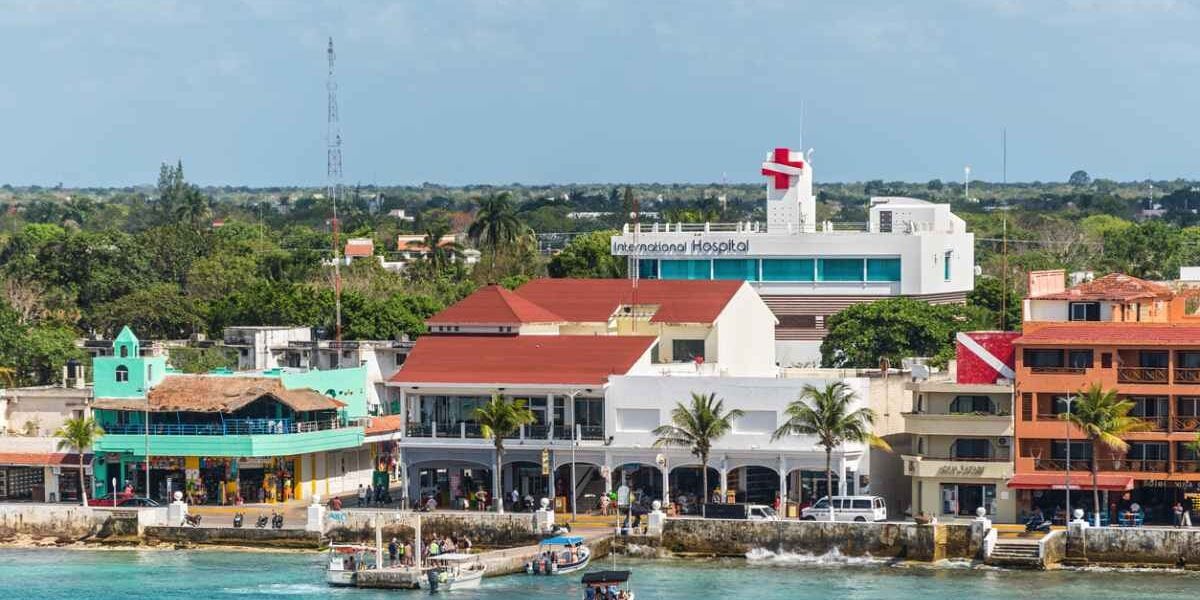
Most immigrants who live in Mexico rely on the private healthcare system, which offers the highest standard of care, comfortable facilities, and shorter wait times for doctor visits and specialists.
If you plan to visit family and friends in the U.S. often or want the option to return for serious medical care, it’s wise to invest in a global medical plan. These plans typically cover medical expenses both in Mexico and the United States.
There are several great health plans to choose from, including:

IMG Global Prima Medical Insurance Plan
- Five plan options and additional optional benefits to include
- Choice of the coverage area to reflect your geographical area of need
- Freedom to choose your health care provider wherever you are in the world

Cigna Global Medical Plan
- Flexibility to tailor plans to suit your individual needs
- Access to Cigna Global’s network of trusted doctors
- Convenience and confidence of 24/7/365 customer service
Notably, U.S. citizens planning on moving to Germany can also apply for the following:

Xplorer Worldwide Medical Plan
- Premium Benefits, Coverage and Service
- Define your deductible and prescription benefits
- For Foreigners in the US or US Citizens Abroad
Ready to Move South of the Border?
From the stunning beaches of Baja California to the vibrant coastlines of the Yucatán Peninsula, Mexico offers an affordable cost of living and an exceptional quality of life.
With its growing appeal among foreign retirees, Mexico is an ideal destination for those seeking a new chapter abroad. If you’re dreaming of spending your golden years in a warm and welcoming environment, explore our guide to the best places to retire in Mexico.
Once you secure the right visa, health coverage, and sufficient income or savings to sustain your lifestyle, you’ll be ready to join the thriving community of expats enjoying life in one of the most beautiful and affordable countries in the world.


